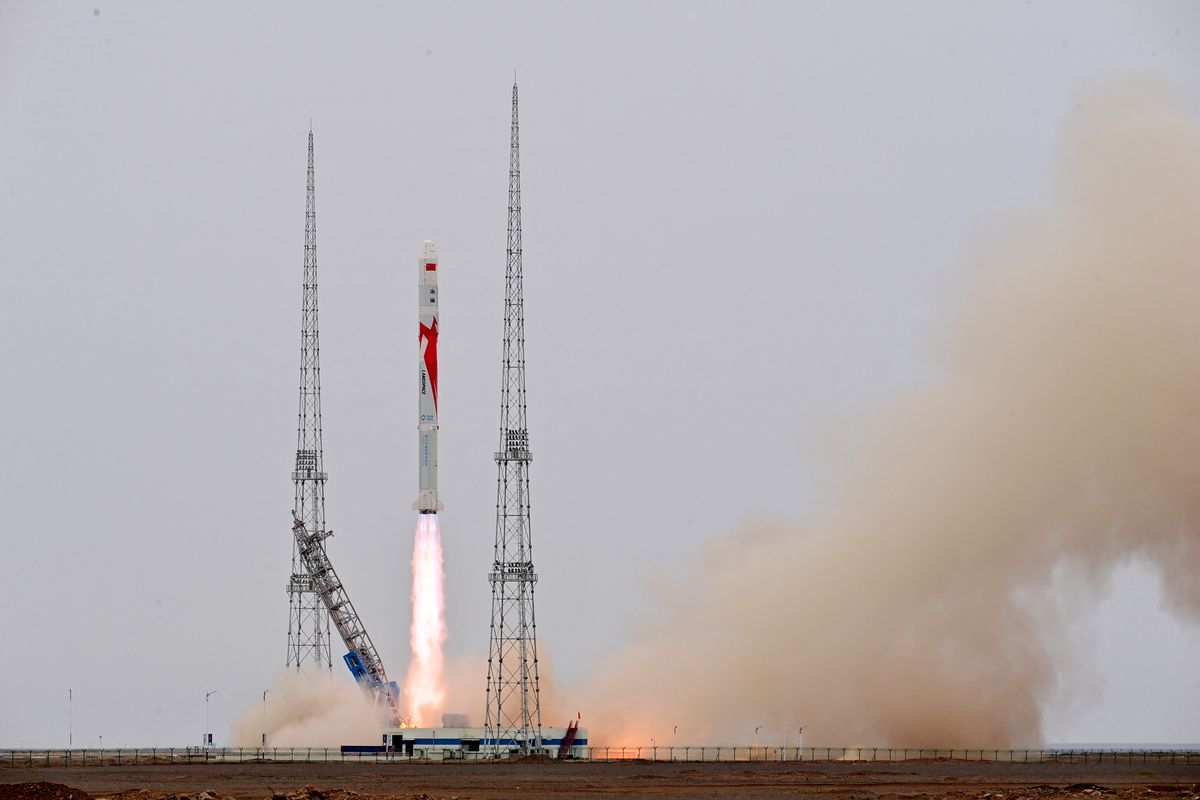How China's Project GW looks to compete with Starlink in space
Around 2020, China started working on the "Guowang" megaconstellation project, which aims to counter SpaceX's Starlink.

A few minutes every morning is all you need.
Stay up to date on the world's Headlines and Human Stories. It's fun, it's factual, it's fluff-free.
The backstory: Starlink is Elon Musk's brainchild under SpaceX, and it’s on a mission to change the game when it comes to the world’s internet connection. It’s already deployed over 4,500 satellites, with most of them orbiting 550 kilometers above the Earth's surface. The company aims to build a megaconstellation of around 42,000 of these satellites to make online communication faster and more accessible. Basically, this would be a large network of satellites in space meant to work together to enhance global connectivity.
Meanwhile, on the other side of the world, China has its own ambitious plans for space. Around 2020, the world’s second-largest economy started working on the "Guowang" megaconstellation project, which aims to counter SpaceX's Starlink. This project, known as Project GW, was launched by the National Development and Reform Commission, a government agency that oversees major economic policies and projects.
More recently: In 2021, China set up the China Satellite Network Group. This group, led by key figures from top state-owned aerospace groups, is set to oversee China's low-earth orbit megaconstellation, streamline satellite programs for both state and civilian use and expedite national projects.
Some concerns China has about Starlink and other rival satellite network projects include national security risks and overcrowding in space and on the airwaves.
The development: Chinese aerothermal expert Qu Wei has shed some new light on the Guowang project, which aims to go head-to-head with SpaceX's Starlink with almost 13,000 low-orbit satellites. According to Qu, the GW satellites are likely to be positioned in lower orbits compared to Starlink's satellites. This would help minimize collision risks and ensure more safety in space. Lower orbit satellites also have some neat advantages, like increased resilience, more flexible deployment and higher transmission capacity, all while reducing interference from the terrain.
Qu accused Starlink of causing a "space enclosure movement" in low-Earth orbit due to the sheer number of its satellites, which could pose risks to other nations. He also raised questions about Starlink's ties to the US military, hinting at possible implications for security and information sovereignty.
Key comments:
“It is no secret that working with Starlink, the US is deploying a space-based defensive, and even offensive, system,” said Qu Wei of China Academy of Aerospace Aerodynamics in an article for CPPCC Daily on Thursday.
“China has the advantage of concentrating its efforts to accomplish major tasks, and the Chinese version of Starlink is advancing steadily,” wrote Qu. “The development of China’s space industry and the fate of the Chinese people must be controlled in their own hands.”
“This year, there’s a fairly good chance China will launch a couple dozen low-Earth orbit communications satellites. And next year, they might launch a couple hundred,” said Blaine Curcio, founder of Orbital Gateway Consulting, which tracks the development of China’s satellite industry, to The Washington Post in April. “In five years, if you were to tell me that China has 2,000 low-Earth orbit communications satellites in orbit, I would say that’s probably about the baseline.”




Comments ()